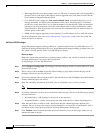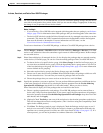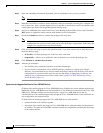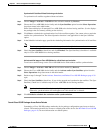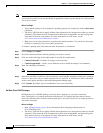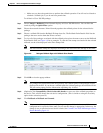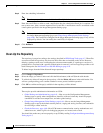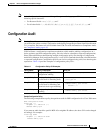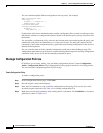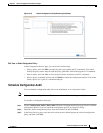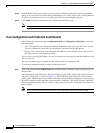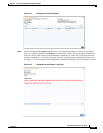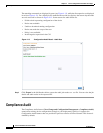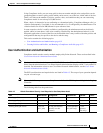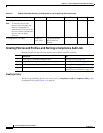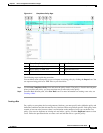
4-46
Cisco Prime Network 4.0 User Guide
OL-29343-01
Chapter 4 Device Configurations and Software Images
Configuration Audit
You can combine multiple different configurations into one policy. For example:
#BGP Configuration Audit
router bgp (.*)
neighbor (.*) remote-as (.*)
address-family ipv4
# Interface MEP check
interface GigabitEthernet(.*)
ethernet (.*)
mep domain UP (.*)
Configuration audit can be scheduled against multiple configuration files to obtain an audit report that
indicates the existence of configuration sequences stated in the baseline policy and any deviations from
the baseline.
You can define a configuration policy, select the devices that need to be audited against the policy, and
schedule the audit job to run immediately or at a later point in time. The audit job compares the CLI
commands (as part of the configuration policy) against the actual running configuration on the device to
identify the discrepancies.
You can view the status of all the scheduled configuration audit jobs in the Job Manager page. The
configuration audit results are in the form of a report indicating the discrepancies (missing configuration
commands on the device) in red and the matching commands in green.
Manage Configuration Policies
CCM allows you to create, modify, view, and delete configuration policies. Choose Configuration
Audit > Configuration Policies. The Configuration Policies page provides the list of existing policies.
You can search the configuration policies by CLI strings.
Create Configuration Policy
To create a configuration policy:
Step 1 In the Configuration Policies page, click Create.
Step 2 Provide the policy name and description.
Step 3 Enter the CLI commands to set up a baseline configuration for that policy. This can also be a valid,
Java-based regular expression. See Table 4-4 for sample configuration CLIs.
Step 4 Make sure you follow the guidelines while entering the CLI commands. Click Guidelines to view these
guidelines as shown in Figure 4-10.



